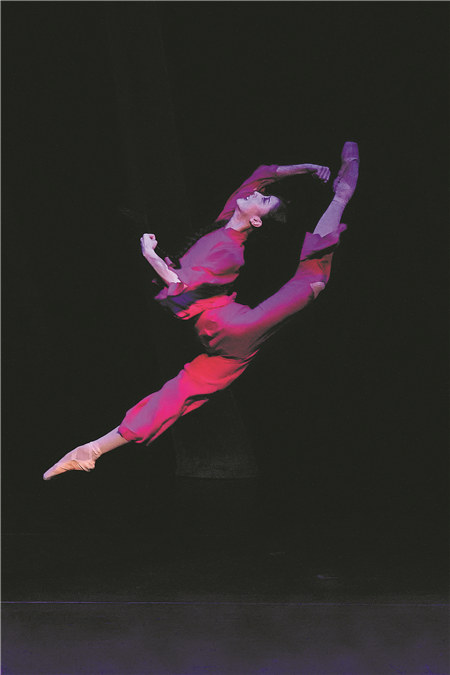A new generation's take on an old classic
By Chen Nan | China Daily | Updated: 2024-09-23 07:34

Under music director and chief conductor Zhang Yi, the national ballet's symphony orchestra will provide powerful live accompaniment, permitting the audience to reexperience beloved melodies.
"The Red Detachment of Women is a milestone in Chinese ballet, a testament to the collective creativity of New China's artists. It has inspired generations and garnered global acclaim. Our mission is to preserve and renew this classic, ensuring that its emotional and artistic power remains ever-vibrant," says Feng Ying, artistic director and the head of the National Ballet of China, which was founded in 1959, 10 years after the founding of the People's Republic of China.
Based on a 1961 film of the same name, The Red Detachment of Women tells the story of a rural girl, Wu Qionghua, who escapes a life of slavery and joins an all-female Communist Party army battalion led by commander Hong Changqing on Hainan Island during the civil war in the early 1930s.
Feng, a renowned ballerina, can still recall the first time she played Wu. It was May 23, 1992, when The Red Detachment of Women was being restaged after a 10-year gap.
"The first ballerina to play Wu Qionghua was Bai Shuxiang, and she set a high standard for those who followed her in the role. The Red Detachment of Women is a Chinese story and incorporates a range of dance elements including classical Chinese dance movements, as well as movements borrowed from martial arts and Chinese operas," says Feng, who is known for playing the lead in Western ballets like Swan Lake, Giselle and Don Quixote.
"I was very lucky to be trained by the established ballet dancers and artists who created The Red Detachment of Women, such as choreographer Li Chengxiang," says Feng. "The ballet plays a crucial role in training new generations of dancers, instilling in them the techniques, expressions and cultural narratives that are integral to the company's heritage."
Feng says that to better understand and portray the female soldiers, the creative team and cast members received military training, allowing them to observe and experience women soldiers in person. "The dancers took off their ballet shoes and put on army boots. They received strict training just like soldiers," says Feng, adding that they also traveled to Hainan, where the story takes place.
Zhang Jian has played Wu many times. The former principal ballerina and the deputy director of the national ballet will return to the stage to reprise the role for the latest celebration.
"Ever since I joined the company, I wanted to play Wu Qionghua, a woman who is fearless and brave, battling a miserable fate. In 2002, I was proud to be able to fulfill that wish," says the dancer, who began to train at the age of 9 and graduated from Beijing Dance Academy in 1996. "The ballet embodies the revolutionary spirit and patriotic fervor of its time, and celebrates the resilience and bravery of the Red Army's female soldiers, which resonates deeply with national identity and memory. It represents the artistic innovation of early Chinese ballet, blending Western techniques with Chinese themes and storytelling, setting a precedent for future works in the genre."
























